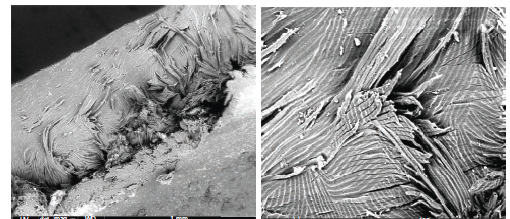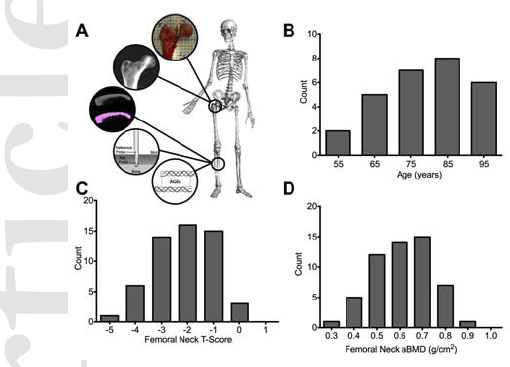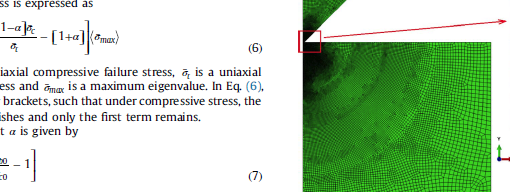Abstract
To unravel the origins of decreased bone strength in the superolateral femoral neck, we assessed bone structural features across multiple length scales at this cortical fracture initiating region in postmenopausal women with hip fracture and in aged-matched controls. Our combined methodological approach encompassed atomic force microscopy (AFM) characterization of cortical bone nano-structure, assessment of mineral content/distribution via quantitative backscattered electron imaging (qBEI), measurement of bone material properties by reference point indentation, as well as evaluation of cortical micro-architecture and osteocyte lacunar density. Our findings revealed a wide range of differences between the fracture group and the controls, suggesting a number of detrimental changes at various levels of cortical bone hierarchical organization that may render bone fragile. Namely, mineral crystals at external cortical bone surfaces of the fracture group were larger (65.22nm±41.21nm vs. 36.75nm±18.49nm, p<0.001), and a shift to a higher mineral content and more homogenous mineralization profile as revealed via qBEI were found in the bone matrix of the fracture group. Fracture cases showed nearly 35% higher cortical porosity and showed significantly reduced osteocyte lacunar density compared to controls (226±27 vs. 247±32#/mm(2), p=0.05). Along with increased crystal size, a shift towards higher mineralization and a tendency to increased cortical porosity and reduced osteocyte lacunar number delineate that cortical bone of the superolateral femoral neck bears distinct signs of fragility at various levels of its structural organization. These results contribute to the understanding of hierarchical bone structure changes in age-related fragility.
https://www.ncbi.nlm.nih.gov/pubmed/24614625
Exp Gerontol. 2014 Jul;55:19-28. doi: 10.1016/j.exger.2014.03.001. Epub 2014 Mar 12.





